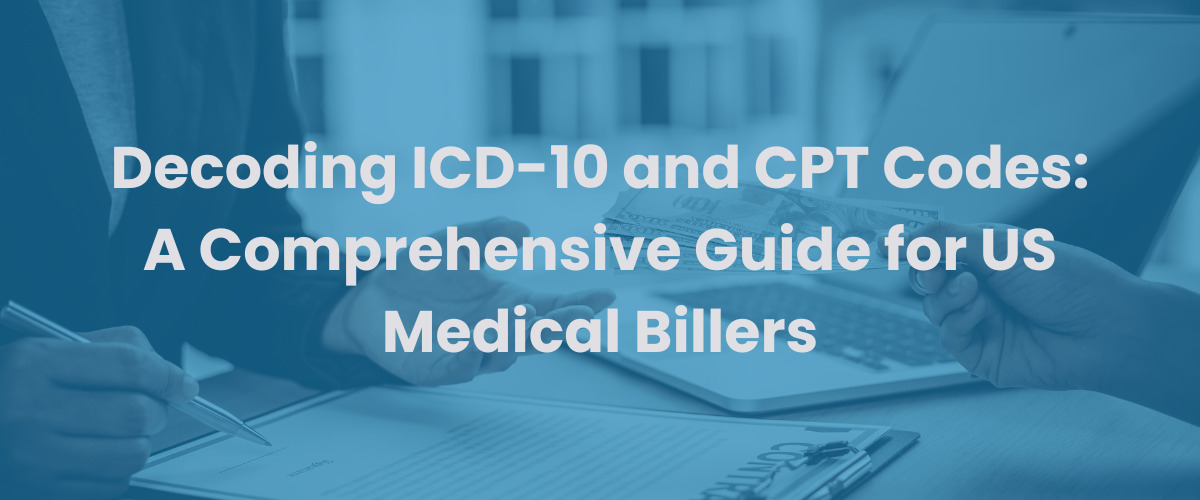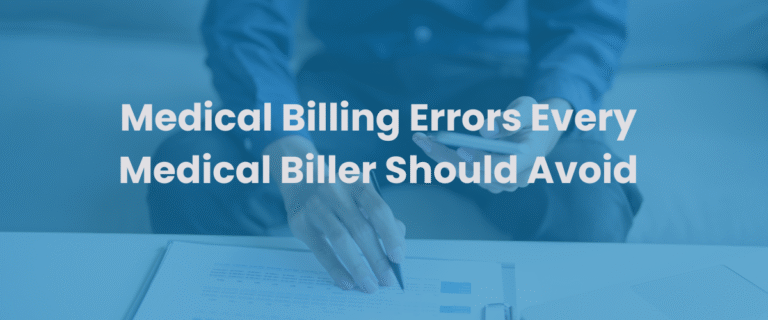Understanding ICD-10 and CPT codes is not just a technicality for US medical billers; it’s the bedrock of successful revenue cycle management (RCM). These intricate alphanumeric and numeric codes form the universal language of healthcare, translating every diagnosis, procedure, and service into billable information that payers—from private insurance to Medicare and Medicaid—can understand and process.
For any US medical practice, mastering these codes is paramount. Errors in medical coding lead to claim denials, delayed reimbursements, increased administrative burden, and ultimately, significant revenue leakage. This comprehensive guide will demystify ICD-10 and CPT codes, highlighting their critical roles and offering insights for US medical billers to achieve peak accuracy and efficiency.
What are CPT Codes? The “What Was Done”
CPT stands for Current Procedural Terminology. Developed and maintained by the American Medical Association (AMA), CPT codes are five-digit numeric codes that describe medical, surgical, and diagnostic services performed by healthcare providers. Think of CPT codes as detailing what was done to the patient.
Key characteristics of CPT codes:
- Five-digit numeric codes: E.g., 99213 for an office visit, 97110 for therapeutic exercise.
- Categories: Divided into three main categories, with Category I being the most common for services and procedures. Category II codes are for performance measurement, and Category III codes are for emerging technologies.
- Modifiers: Two-digit alphanumeric codes appended to a CPT code to provide additional information about the service without changing its definition (e.g., -25 for a significant, separately identifiable E/M service).
- Annual Updates: CPT codes are updated annually, effective January 1st, requiring billers to stay continuously informed.
For US medical billers, accurate CPT coding ensures that the services rendered are precisely documented and billed, leading to correct reimbursement for the provider’s work.
What are ICD-10 Codes? The “Why It Was Done”
ICD-10 stands for the International Classification of Diseases, 10th Revision. These are alphanumeric codes used to describe diagnoses, symptoms, injuries, and reasons for patient encounters. Developed by the World Health Organization (WHO), the US uses a clinical modification of ICD-10, known as ICD-10-CM (Clinical Modification) for diagnoses across all healthcare settings, and ICD-10-PCS (Procedure Coding System) for inpatient hospital procedures.
Think of ICD-10 codes as explaining why the patient sought care or why a particular service was medically necessary.
Key characteristics of ICD-10-CM codes (most relevant for billers):
- Alphanumeric structure: Codes can be 3 to 7 characters long.
- Specificity: ICD-10-CM offers vastly more detail than its predecessor (ICD-9), allowing for precise descriptions of conditions, anatomical sites (e.g., left vs. right arm fracture), and even the stage or type of disease.
- Laterality and Seventh Characters: Often include specific characters for laterality (left/right) and seventh characters for encounter type (initial, subsequent, sequela), especially for injury codes.
- Annual Updates: ICD-10-CM codes are updated annually, effective October 1st.
The specificity of ICD-10 coding in US healthcare is crucial for justifying medical necessity, supporting the billed CPT codes, and providing robust data for public health tracking, research, and healthcare management.
The Symbiotic Relationship: CPT and ICD-10 Working Together
Neither CPT nor ICD-10 codes can stand alone for complete medical billing. They are inextricably linked, telling the full story of a patient encounter for payers. This critical connection is known as code linkage or medical necessity.
- ICD-10 codes explain why the patient was seen (the diagnosis).
- CPT codes explain what was done to treat or diagnose that condition (the procedure or service).
For a claim to be considered “clean” and payable, the CPT codes must logically align with and be supported by the ICD-10 diagnosis codes. For example, billing for a knee MRI (CPT) without a corresponding knee injury or condition (ICD-10) will almost certainly result in a claim denial. This linkage demonstrates medical necessity, proving to the payer that the services provided were appropriate and required for the patient’s condition.
Common Coding Challenges for US Medical Billers
Despite their foundational importance, mastering ICD-10 and CPT coding presents ongoing challenges:
- Constant Updates: Both code sets are updated annually, requiring continuous education and vigilance to implement new codes, revisions, and deletions correctly.
- Specificity Demands: ICD-10’s high level of detail means missing even one character can lead to a denial. Providers must provide thorough, specific documentation to support the chosen codes.
- Payer-Specific Guidelines: While universal, individual payers may have their own specific coding guidelines, local coverage determinations (LCDs), or national coverage determinations (NCDs) that must be followed.
- Documentation Discrepancies: Inaccurate or insufficient clinical documentation from providers is a primary cause of coding errors and subsequent denials.
- Bundling and Unbundling: Understanding when services can be billed separately or must be bundled (CCI edits) is crucial to avoid denials and compliance issues.
Strategies for Mastering ICD-10 and CPT Coding
To maximize reimbursement and ensure compliance, US medical billers should adopt these strategies:
- Continuous Education: Regular training on code updates, coding guidelines, and industry best practices is non-negotiable. Certifications (e.g., CPC, CCS) require ongoing education.
- Invest in Up-to-Date Resources: Always use the current year’s official coding manuals (AMA CPT, AAPC/AHIMA ICD-10-CM/PCS) and reputable online coding tools.
- Foster Provider-Biller Collaboration: Encourage open communication between clinical staff and billing teams. Providers must understand the documentation requirements that support accurate coding.
- Implement Robust Claim Scrubbing: Utilize advanced medical billing software with built-in claim scrubbers that can identify common coding errors and inconsistencies before claims are submitted.
- Regular Audits: Conduct internal and external audits of coded claims to identify patterns of errors, areas for improvement, and ensure compliance. This helps improve your first-pass claim acceptance rate.
- Leverage Technology: Modern revenue cycle management solutions often include coding assistance features, integrated compliance checks, and data analytics tools that highlight coding-related denial trends.
How AtMedBilling Can Help You Decode Success
The intricate world of ICD-10 and CPT codes can be overwhelming, especially for busy US medical practices. That’s where AtMedBilling steps in. Our team of highly trained and certified medical coders and billers are experts in the latest coding guidelines and payer-specific requirements.
We offer comprehensive medical coding services designed to:
- Ensure Accuracy: Our meticulous coders ensure every diagnosis and procedure is coded to the highest level of specificity and compliance.
- Reduce Denials: By applying expert coding knowledge and leveraging advanced claim scrubbing, we significantly minimize coding-related denials and rejections.
- Maximize Reimbursement: Accurate coding directly translates to optimal and timely payer reimbursement, preventing revenue leakage.
- Stay Updated: We continuously monitor coding updates and regulatory changes, ensuring your claims are always compliant with the latest guidelines (e.g., CPT 2025 updates, ICD-10-CM 2025 updates).
- Enhance Compliance: We help your practice adhere to all HIPAA and coding compliance standards, mitigating audit risks.
Testimonials: Precision in Practice
“Before partnering with AtMedBilling, our coding errors were a constant source of frustration and claim denials. Their expertise in ICD-10 and CPT codes has been a game-changer. Our first-pass claim acceptance rate has soared, and our revenue cycle is significantly healthier.”
— Sarah Williams, Practice Manager, Orthopedic Clinic, Phoenix, AZ
“AtMedBilling’s commitment to accurate medical coding is truly impressive. They stay on top of every CPT update and ICD-10 revision, ensuring our claims are always perfect. This level of precision has streamlined our reimbursement process and allowed us to focus more on patient care.”
— Dr. Michael Lee, Internal Medicine, New York, NY
Your Partner in Coding Excellence
Mastering ICD-10 and CPT codes is essential for any US medical biller aiming for RCM optimization. It’s the difference between a thriving practice and one struggling with financial setbacks. By understanding the nuances of these codes and implementing robust strategies, you can significantly improve your practice’s financial health.




